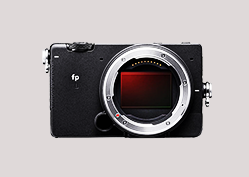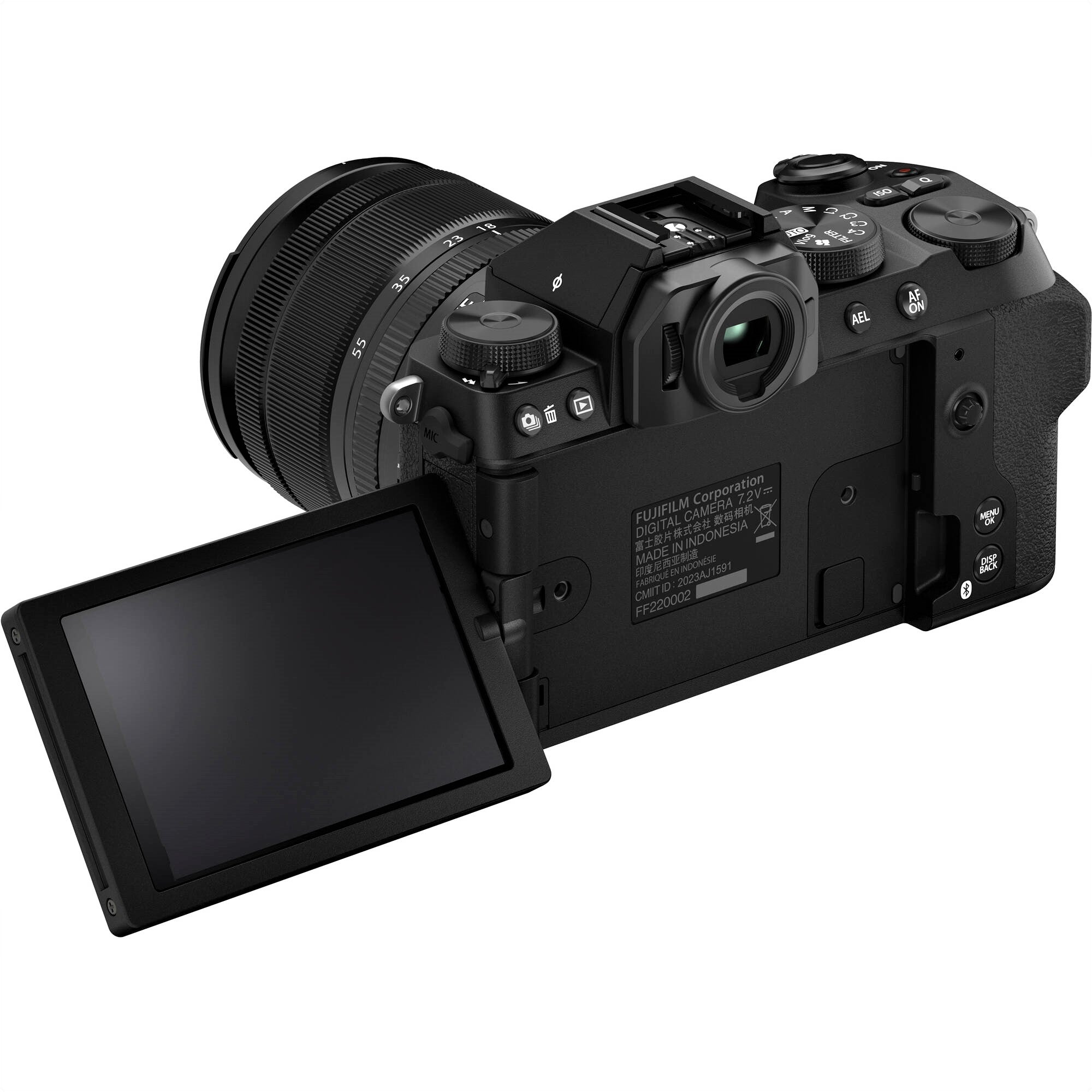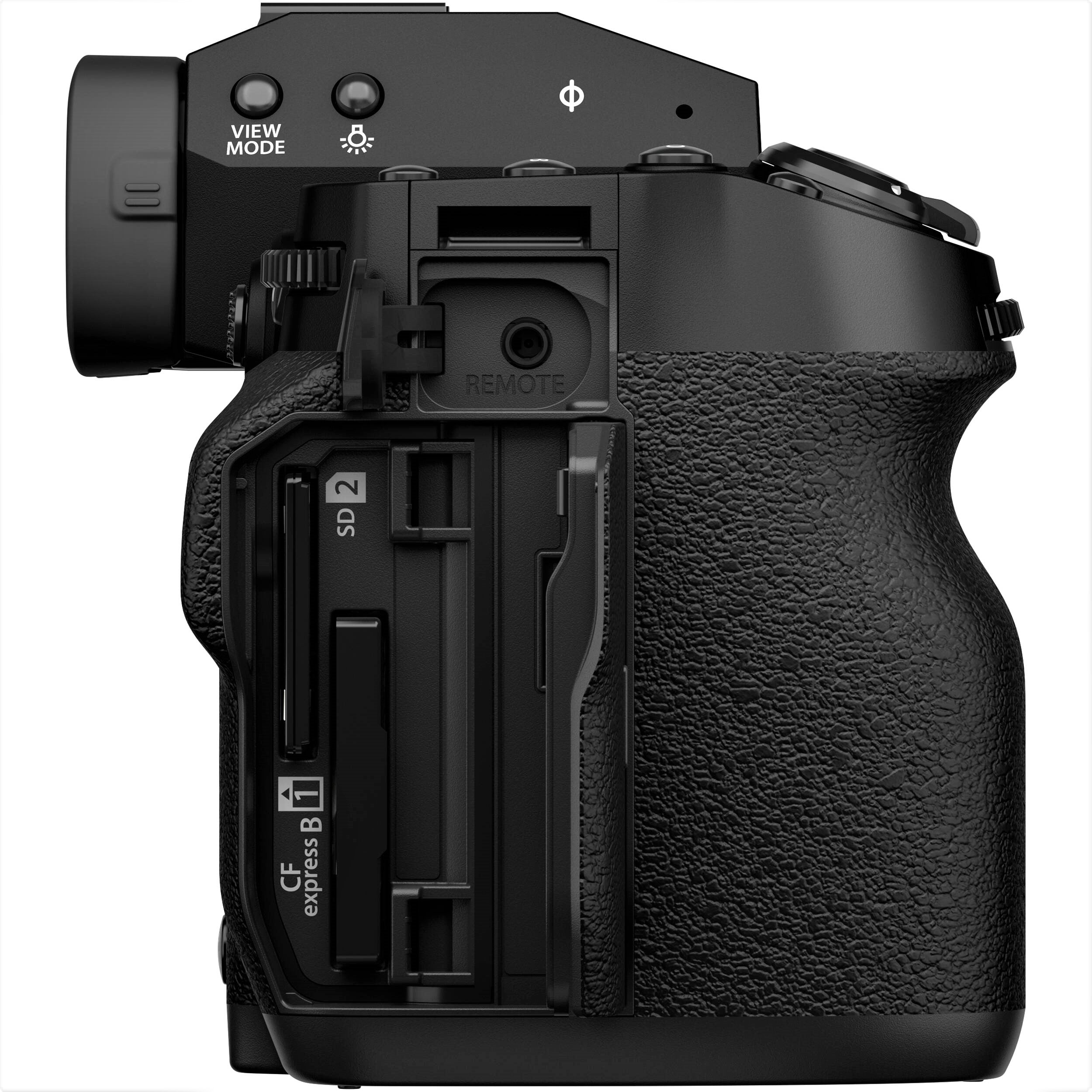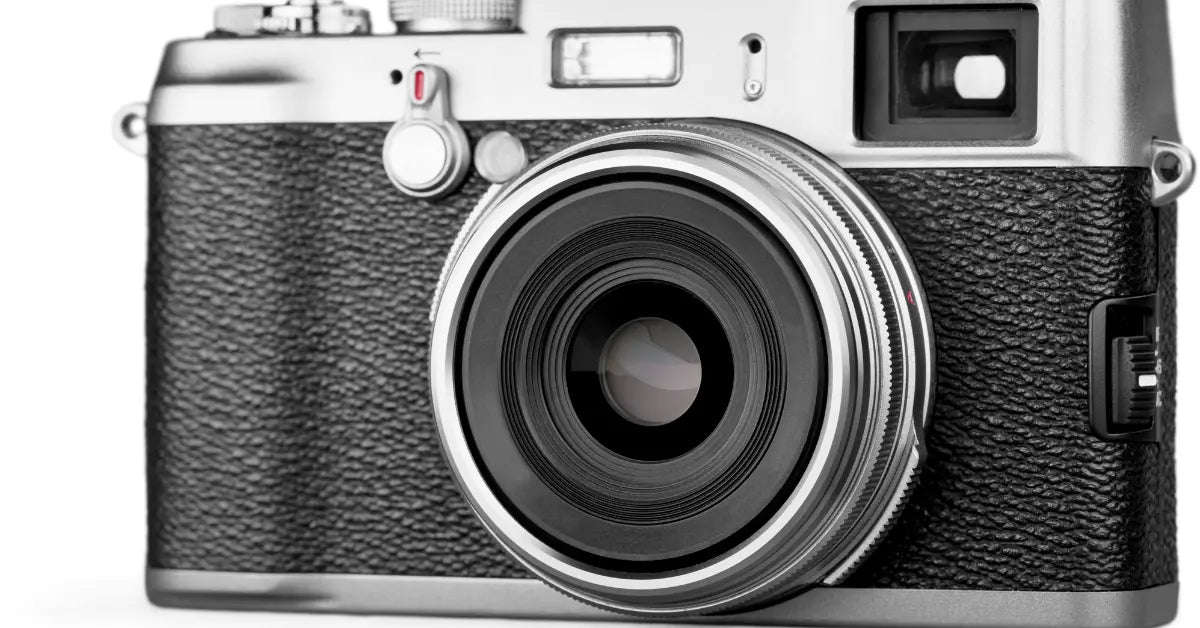Ever found yourself gazing at a sea of camera lenses, feeling like a kid in a candy store yet kinda lost at the same time? Hey, whether you're just starting to dabble in photography or you're the one everyone's going "Wow, you took that?" to, getting the lowdown on camera lenses is pretty much a game-changer.
So, what’s this blog gonna do? We’re going on a deep discussion. Think of it like a backstage tour – we’ll check out those all-rounder Sigma lenses, take a peek at what Tamron's got up its sleeve, and a whole lot more. Each lens is like a superhero with its own special power, and I’m here to show you which one’s gonna save your day, photography-wise.
We’ll talk about why some lenses are great for making your Instagram food shots pop, while others are like having a backstage pass to a concert (hello, front row!). Plus, we’ll get into all the juicy details – why some lenses cost more than your laptop and why others are surprisingly affordable.
So, grab your favorite camera, get comfy, and let’s jump into the awesome world of camera lenses. By the end of this, you'll be picking out lenses like a pro, knowing exactly which one's going to nail that perfect shot. Let's roll!
Camera Lens Explained

A camera lens, simply put, is an optical lens or assembly of lenses used in conjunction with a camera body to make images of objects either on photographic film or on other media capable of storing an image chemically or electronically.
Here's a more detailed breakdown of what a camera lens is and its functions:
- Optical Design: At its core, a camera lens is designed to focus light rays so that they recreate an image on the digital sensor or film. This is achieved through a precise arrangement of glass elements within the lens, which refract (bend) the light.
- Focal Length: The focal length of a lens, usually measured in millimeters (mm), determines its angle of view (how much of the scene will be captured) and the magnification (how large individual elements will be). Different focal lengths are suited for different types of photography: wide-angle (short focal length) for landscapes, telephoto (long focal length) for distant subjects, and standard (mid-range focal length) for general-purpose photography.
- Aperture: The aperture is the hole within the lens through which light passes. It's described by an f-number (like f/2.8, f/4, f/5.6, etc.). A lower f-number means a larger aperture, allowing more light to enter, which is beneficial in low light conditions and for achieving a shallow depth of field (blurred background).
- Lens Mount: Every lens is designed to fit a specific type of camera mount, which connects the lens to the camera body. This connection must be precise to maintain the correct distance between the lens and the image sensor and ensure electronic communication between the lens and camera (for autofocus, aperture control, etc.).
- Types of Lenses: There are various types of lenses, such as prime lenses (fixed focal length), zoom lenses (variable focal lengths), macro lenses (for close-up photography), and special-purpose lenses like fisheye or tilt-shift lenses.
- Image Quality Factors: Lenses influence image sharpness, contrast, bokeh (the quality of out-of-focus areas), color rendition, and potential optical defects like chromatic aberration or distortion.
A camera lens is a sophisticated tool that significantly affects how an image is captured and the overall quality of the photograph. The choice of lens can define the photographer's ability to capture the world around them, from vast landscapes to the smallest details.
The Basics of Different Types of Camera Lenses
Think of a camera lens as your camera's personal superhero - the unsung hero that brings your vision to life. Imagine it like the eye of your camera, but way cooler. It's not just a piece of glass; it's a masterful combo of several glass pieces that work together to capture light and turn it into the images you see.
Picture this: light bounces off everything around us. The lens’s job is to grab that light and focus it onto your camera's sensor (or film, if you're old-school) so that it forms a clear, sharp picture. It's like how our eyes focus light onto our retina to help us see.

But here's where it gets interesting – not all lenses are the same. They come in a bunch of different shapes and sizes, each with a unique superpower. Some lenses can zoom in super far, so you can take a picture of a bird from a distance without scaring it away. Others are designed to capture the entire landscape in front of you, making them great for those breathtaking mountain views.
The key is that each type of lens brings its own flavor to the table. They can make your photos sharper, blur out the background for that dreamy look, or even let you shoot in super low light. It’s like choosing the right shoes for your outfit – you gotta pick the one that matches what you’re going for.
In short, a camera lens isn’t just a piece of your camera; it’s the magic wand that lets you capture life as you see it, in all its glory. Whether you’re snapping photos of your cat, capturing the hustle of the city streets, or shooting the stars, your lens is your trusty sidekick, making sure every shot is a masterpiece.
Basic Camera Lenses

Prime Lenses
Prime lenses are the straightforward, no-nonsense stars in your camera kit. They stick to one focal length, which means they deliver incredibly sharp images. Think of them as your camera's HD vision. Their wide apertures (low f-numbers like f/1.4) are awesome in low light, letting in more light and creating that dreamy blurred background, known as bokeh. This makes your subject stand out beautifully.
What's also great? They're lightweight and compact, perfect for on-the-go photography. Whether you're capturing the vibrant life on city streets, snapping portraits, or traveling, a prime lens is your go-to for quality shots without the bulk. It's a game changer for adding that professional touch to your photos.
Here are some recommendations:
Sigma Prime Lenses
- Sigma 35mm f/1.4 DG HSM Art: This lens is a favorite among photographers for its outstanding image quality and wide aperture. It's perfect for street photography, portraits, and everyday shooting. The lens offers sharp images with beautiful bokeh and performs exceptionally well in low-light conditions.
- Sigma 85mm f/1.4 DG HSM Art: Ideal for portrait photographers, this lens offers incredible sharpness and a very wide aperture. It creates stunning background blur, bringing a professional quality to your portraits and headshots.
- Sigma 50mm f/1.4 DG HSM Art: A versatile lens that's great for a variety of shooting scenarios, from portraits to landscapes. It offers excellent optical performance, a wide aperture, and is well-suited for low light.
Tamron Prime Lenses
- Tamron SP 35mm f/1.4 Di USD: Known for its exceptional sharpness and clarity, this lens is a top choice for professional and enthusiast photographers. It's great for a wide range of photography styles, including landscapes, street photography, and general use.
- Tamron SP 45mm f/1.8 Di VC USD: This is a unique lens combining a slightly wider than normal perspective with a relatively wide aperture and built-in vibration compensation. It's perfect for low-light photography and offers a slightly different perspective from the standard 50mm prime lenses.
- Tamron SP 85mm f/1.8 Di VC USD: A superb choice for portrait photographers, this lens delivers sharp, clear images with beautiful background blur. The inclusion of vibration compensation is a bonus, especially in lower light conditions.
Each of these lenses offers something unique, whether it's the focal length, the wide aperture, or the addition of features like image stabilization. Depending on your specific needs and the type of photography you're interested in, one of these lenses could be a perfect addition to your gear.
Remember to check compatibility with your camera body before purchasing!
Zoom Lenses

Think of zoom lenses as the Swiss Army knives of camera lenses. They've got you covered with multiple focal lengths all rolled into one nifty package. This means you get to enjoy a whole bunch of different perspectives without the hassle of swapping lenses every time the scene changes.
Super handy, right? Especially when you're out in the wild trying to snap a shy deer or at a sports event where the action doesn't pause for a lens change.
And the best part? Brands like Sigma and Tamron are rocking the lens world with zoom lenses that don't just save you time and trouble but also don't break the bank. We're talking about top-notch quality that captures stunning shots without costing a fortune.
So, whether you're zooming in to catch that touchdown moment or zooming out to capture the entire stadium, these lenses have got your back.
Here are some recommendations:
Sigma Prime Lenses:
- Sigma 35mm f/1.4 DG HSM Art: This lens is a favorite among photographers for its versatile 35mm focal length and wide f/1.4 aperture. It's excellent for street photography, landscapes, and even portraits. The Art series by Sigma is known for its superb image quality and sharpness.
- Sigma 50mm f/1.4 DG HSM Art: Another gem in the Art series, this 50mm lens is perfect for portrait photography. The wide aperture allows for a shallow depth of field, creating beautiful bokeh that makes your subjects stand out.
- Sigma 85mm f/1.4 DG HSM Art: Ideal for portrait photographers seeking a lens that offers a bit more reach and compression. The 85mm focal length is flattering for portraits, and the f/1.4 aperture ensures excellent performance in low-light conditions.
Tamron Prime Lenses:
- Tamron SP 35mm f/1.4 Di USD: Known for its exceptional sharpness and optical performance, this lens is great for a wide range of photography styles. The fast aperture of f/1.4 is excellent for low light and for achieving a shallow depth of field.
- Tamron SP 45mm f/1.8 Di VC USD: This lens strikes a nice balance between wide and portrait focal lengths. It's a bit unique for a prime lens as it includes Vibration Compensation (VC), Tamron's version of image stabilization, making it a great choice for handheld shooting.
- Tamron SP 90mm f/2.8 Di Macro VC USD: While primarily a macro lens, this 90mm lens is also fantastic for portraits. It offers life-size magnification for macro photography, and the VC feature helps to keep images sharp at close distances.
When choosing a lens, consider what type of photography you enjoy most. For example, wider lenses like 35mm are great for landscapes and street scenes, while longer focal lengths like 85mm or 90mm are better suited for portraits and macro photography.
Both Sigma and Tamron offer lenses with exceptional build quality, excellent image sharpness, and fast apertures, making them a great addition to any photographer's gear.
Specialized Lenses

Macro Lenses
Macro lenses are like the magnifying glasses of the photography world. They're specially crafted to let you get super close to small subjects, think tiny insects, intricate flower petals, or even the textures on a coin.
The cool part? These lenses can capture details that might be invisible to the naked eye, turning an ordinary ant into an extraordinary model.
When you're using a macro lens, it's not just about getting close-up shots. It's about revealing a whole new, almost secret world. The fine lines on a leaf, the delicate patterns on a butterfly's wings, or the subtle textures of a strawberry's surface - macro lenses make these tiny details pop with incredible clarity and precision.
What's really awesome is how they can make the smallest subjects fill your entire frame, giving the sense of a miniature world. It's like having a superpower where you can zoom in on the smallest things and see them in a way you've never seen before.
Whether you're into capturing the tiny wonders of nature or getting creative with everyday objects, a macro lens opens up a world of possibilities for your photography.
Here are some recommendations:
Sigma Prime Lenses:
- Sigma 35mm f/1.4 DG HSM Art: This lens is a favorite among many photographers due to its exceptional sharpness, beautiful bokeh, and fast aperture. It's excellent for street photography, landscapes, and environmental portraits.
- Sigma 50mm f/1.4 DG HSM Art: Known for its superb optical performance, this lens offers great sharpness and a fast aperture. It's versatile, making it perfect for portraits, street photography, and even low-light shooting.
- Sigma 85mm f/1.4 DG HSM Art: This lens is ideal for portrait photographers. It offers excellent sharpness, a beautiful bokeh effect, and a fast aperture, which is perfect for creating a shallow depth of field.
Tamron Prime Lenses:
- Tamron SP 35mm f/1.4 Di USD: This lens is praised for its exceptional image quality and sharpness. It's a great choice for a wide variety of photography styles, including landscapes, street photography, and general-purpose shooting.
- Tamron SP 45mm f/1.8 Di VC USD: This is a unique lens because it's one of the few prime lenses with image stabilization (Vibration Compensation). It's versatile, with a slightly wider perspective than a standard 50mm lens, and is excellent for low-light situations.
- Tamron SP 85mm f/1.8 Di VC USD: Another prime lens with image stabilization, this one is fantastic for portrait photography. It offers sharp images with a pleasing bokeh and the added benefit of stabilization, which is helpful in lower light conditions or for video work.
These lenses from Sigma and Tamron are well-regarded for their optical quality, build, and performance. Your choice would depend on the focal length you need and the specific requirements of your photography style.
Whether you're looking for a lens for portraiture, street, landscape, or general photography, these options cover a wide range of needs with exceptional quality.
Wide-Angle Lenses

Wide-angle lenses are like your go-to buddy for when you want to capture the big picture. Imagine you're standing in front of a breathtaking landscape or a stunning piece of architecture – a wide-angle lens lets you scoop up all that beauty into a single frame. It's like having super-wide eyes that can see more of the world around you.
These lenses are the real MVPs when it comes to fitting everything in, especially when space is tight or you just can't step back any further. You get more sky, more ground, more of everything! And the coolest part? They add this epic sense of depth to your photos, making them look almost three-dimensional.
The foreground looks close and inviting, while the background stretches out, giving you this awesome sense of scale and drama.
For landscape lovers, a wide-angle lens is like a magic wand. It turns ordinary scenes into grand, sweeping vistas. And for those snapping pictures of buildings and cityscapes, it helps capture the full glory of towering skyscrapers and intricate facades, all without chopping off the tops or sides. It's like telling the whole story in one shot.
So, if you're looking to capture the grandeur of the great outdoors or the soul of the city streets, a wide-angle lens is your ticket to awe-inspiring shots that really do justice to the vastness and vibrancy of the world around you.
Here are some recommendations:
Sigma Prime Lenses:
- Sigma 35mm f/1.4 DG HSM Art: This is a fantastic choice for a wide variety of photography needs. Known for its sharpness, beautiful bokeh, and fast aperture, it's great for landscapes, portraits, street photography, and low-light conditions.
- Sigma 85mm f/1.4 DG HSM Art: Perfect for portrait photographers, this lens offers outstanding image quality, with a wide aperture that provides a shallow depth of field and beautiful background blur. It’s also known for its excellent color rendition.
- Sigma 50mm f/1.4 DG HSM Art: A versatile standard prime lens, known for its exceptional optical performance. It's suitable for various types of photography, from portraits to everyday shots, offering clarity and a beautiful bokeh effect.
Tamron Prime Lenses:
- Tamron SP 35mm f/1.4 Di USD: This is a top-of-the-line prime lens from Tamron, offering exceptional sharpness, contrast, and bokeh. It's a versatile lens that's great for landscapes, street photography, and general use.
- Tamron SP 85mm f/1.8 Di VC USD: A standout for portrait photography, this lens combines a fast aperture with image stabilization (VC), a rare find in prime lenses. It delivers sharp images with a pleasing background blur and is also weather-sealed.
- Tamron SP 45mm f/1.8 Di VC USD: A unique focal length, this lens is excellent for those who find 50mm a bit too tight and 35mm too wide. It offers image stabilization, weather sealing, and superb image quality, making it a great all-around lens.
Each of these lenses has its unique strengths, and the best choice depends on your specific photography needs and preferences. Sigma's Art series is highly praised for its optical quality and build, while Tamron's SP series stands out for incorporating image stabilization in their prime lenses, a feature not commonly found in primes.
Both brands offer lenses compatible with various camera mounts, so make sure to choose one that fits your camera body.
Choosing the Right Lens
Picking the perfect lens is a bit like choosing the right shoes for an occasion – it all depends on what you're planning to do. Let's break it down into a chill chat about finding your ideal photography companion.

First up, think about what you love to shoot. Are you all about those epic landscapes, or do you get a kick out of snapping candid street scenes? Maybe you're the portrait type, aiming to capture every emotion in vivid detail. Your chosen style is like your photography fingerprint – totally unique to you.
Next, let's talk about light – the best friend and sometimes the trickiest foe of a photographer. Shooting starry nights or dimly lit indoor events? You'll want a lens with a wide aperture (that's the 'f' number) to let in as much light as possible. Bright, outdoor shoots? You've got more flexibility.
Portability is a biggie too. If you're the adventurous type, always on the move, lugging around a heavy lens can be a real buzzkill. In this case, smaller, lighter lenses are your BFFs. But hey, if you're setting up shop in a studio, then weight might not be your top concern.
Now, let's natter about brands like Sigma and Tamron. These guys are like the hidden gems of the lens world. Sigma lenses? They're known for their sharpness and build quality, not to mention a price that won't make your wallet weep. Tamron?
They're all about versatility and bang for your buck, offering some pretty sweet zoom lenses.
In the end, it's like putting together a puzzle – finding that piece which fits just right with your photography style, lighting needs, and how much gear you're willing to carry. Dive into some research, maybe check out some reviews, and see how these lenses could slot into your kit.
It's all about finding that sweet spot where your needs, style, and lens features meet.
Conclusion
Understanding the types of camera lenses is fundamental in elevating your photography skills. From the sharpness of a prime lens to the versatility of a zoom lens, each type has its unique characteristics and applications.
By choosing the right lens, you open up a world of creative possibilities. So, what's your next lens going to be? Explore, experiment, and capture the world through your lens!
Start by exploring our extensive collection of camera lenses, including the latest from Sigma and Tamron on Nuzira. Whether you're looking for a lens for portrait photography, wildlife shots, or macro images, we have something for every photographer.
Shop now and discover the perfect lens to capture your world!
Join our Discord community to learn more about lenses!






